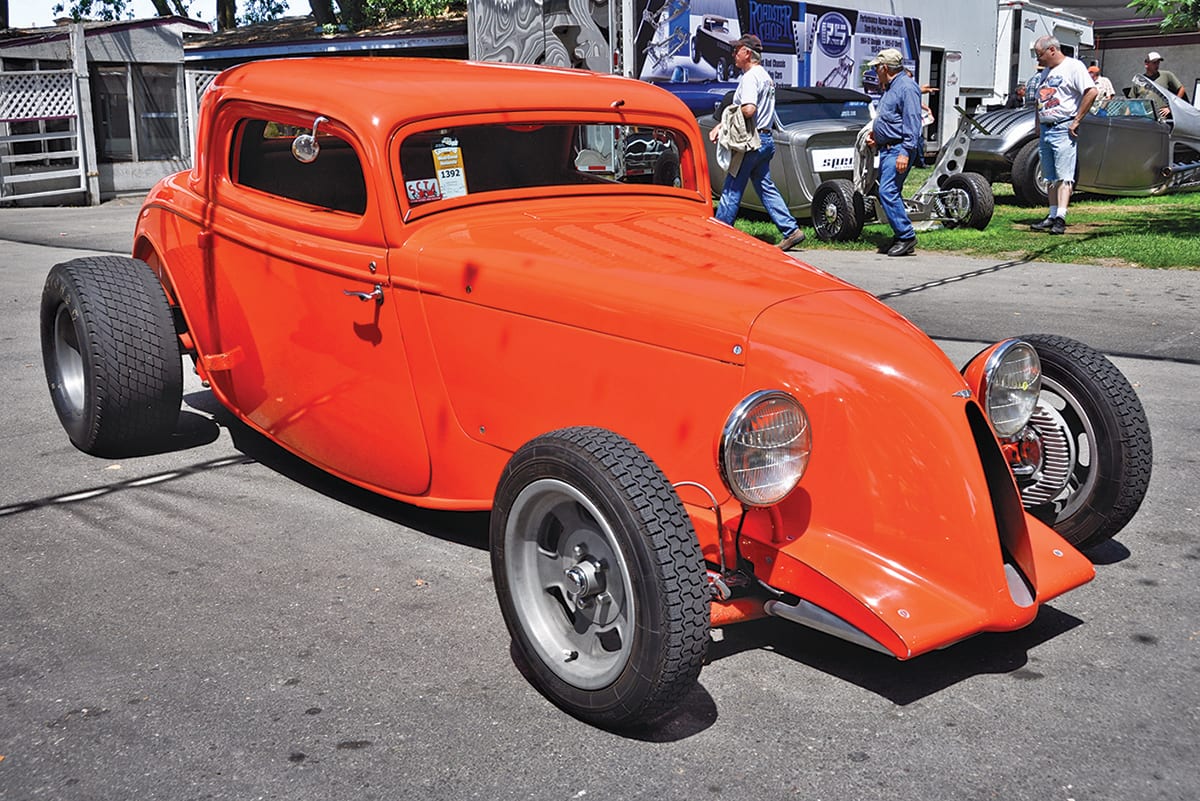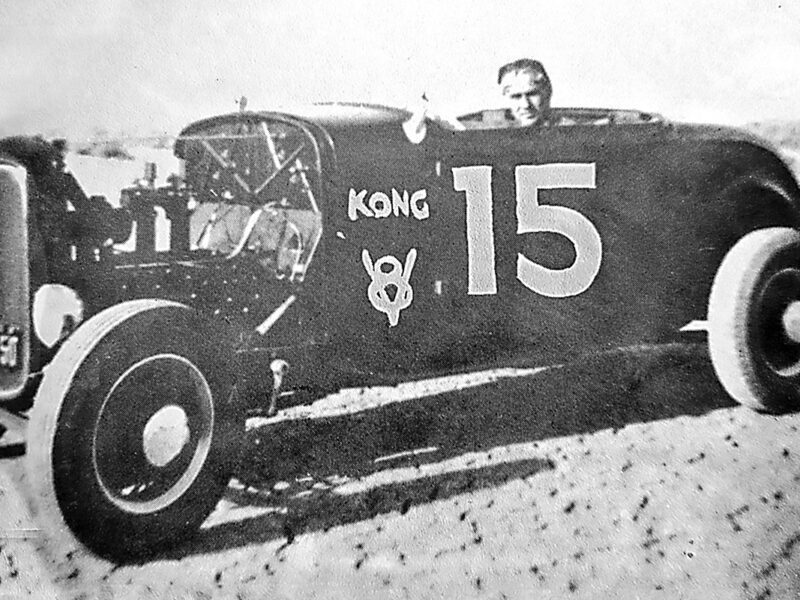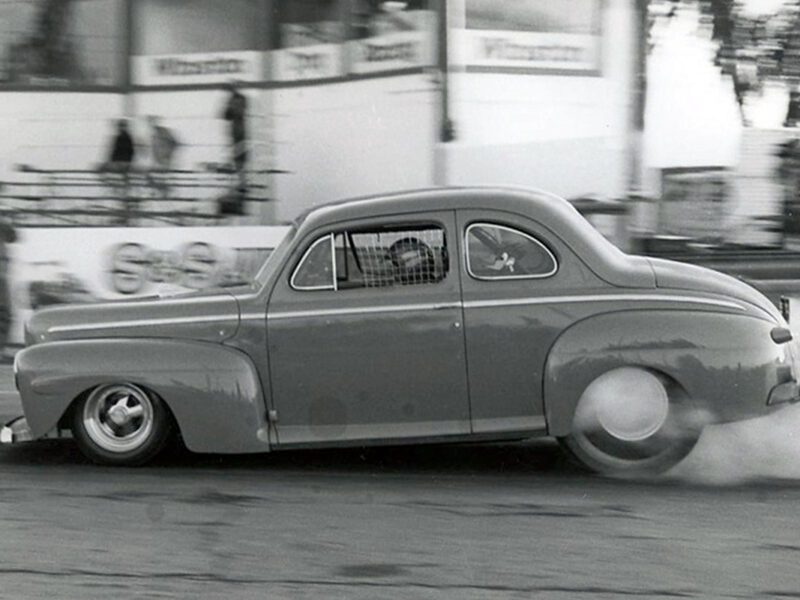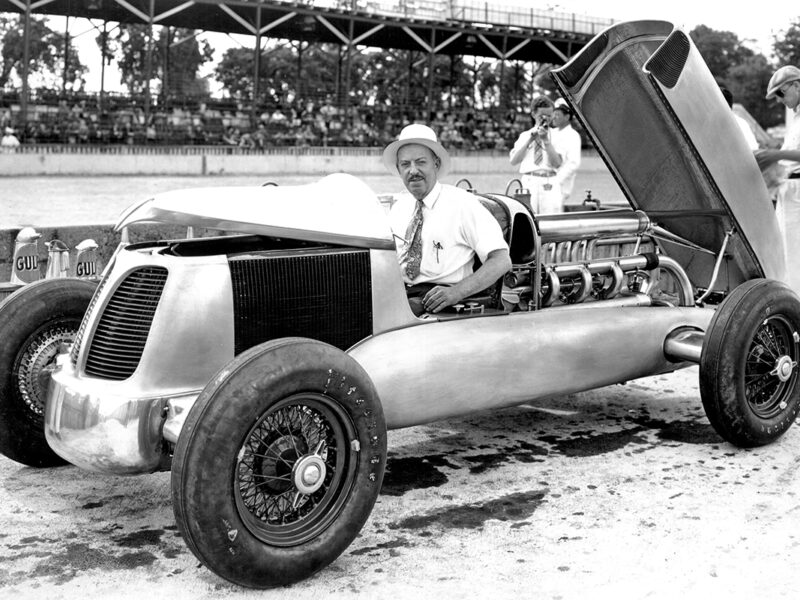Super Bell Axle Coupe – The Orange Bullet
In the 1970s, California was a breeding ground for standout hot rods, ground fertilized by a convergence of factors, most notably the popularity of the Street Rod Nationals, a resurgent Rod & Custom magazine, and an explosion of aftermarket parts suppliers.
Out of this petri dish of performance sprung Jim Ewing’s iconic ’34 Ford coupe, which doubled as a rolling logo for his company, Super Bell Axle. Super Bell Axle didn’t invent the dropped straight axle, but it did popularize the component to a new generation of rodders. And Ewing’s coupe was the embodiment of the dropped-axle’s “in-the-weeds” look.
Few hot rods cut such a dramatic figure: slammed stance, aerodynamic bullet nose, fender-free, and a severely chopped lid, all accented by a brilliant orange hue.
The construction of the car predates the founding of Super Bell Axle by one year, 1975. Ewing purchased the car from fellow Angeleno George Wilson, and it wasn’t much to look at. It featured gag-inducing green paint over a litany of body sins suffered during its rough-and-tumble days as a race car. On the upside, the top was already chopped.
Ewing was an eccentric and charismatic character with a wild and daring approach to life. There were even rumors that he fled Texas for SoCal a step ahead of the law. As a car builder he was unconventional, as well. His original goal for the coupe was to create a vehicle that could calmly prowl the streets of Los Angeles then easily fly across the salt flats at 200mph.
Friend Ed Belknap shared Ewing’s enthusiasm for the project and plan to play dual roles. Hence the aerodynamic bullet-shaped nose – crafted in aluminum by metal man Kenny Ellis – and the integrated skirts that directed airflow over the frame rails.
The first engine Ewing tucked behind that famous snozola was a 435hp Chevy big-block. Unfortunately, the heat created by the big block overwhelmed the cooling efficiency of the small radiator opening. On the coupe’s maiden cross-country jaunt to the 1976 Street Rod Nationals, the nose was removed during the drive and reinstalled at the show.
The Super Bell Axle coupe’s color is as much a part of the car’s legacy as its shape. Jim Caulfield of Caulfield Automotive handled bodywork and paint. (He did likewise for the Pete Chapouris “California Kid” coupe and Jim Jacob’s yellow coupe.) The paint itself, though, was sourced by Ewing himself. The orange lacquer paint was originally manufactured for military use – in 1958. Ewing picked it up at a surplus store for $1 a gallon.
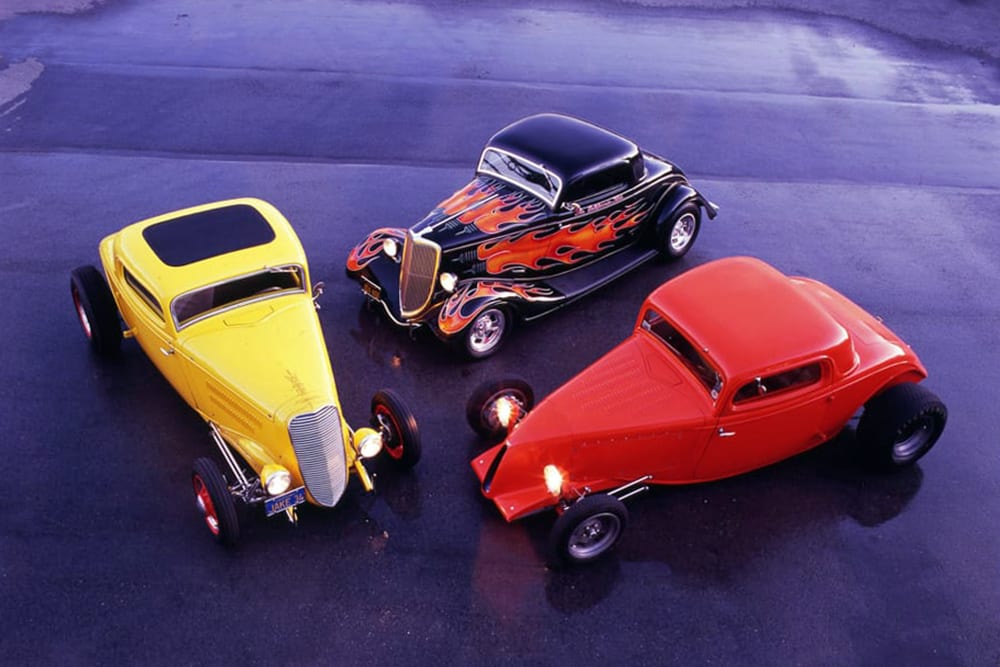
The original drivetrain featured a quick-change reared, TH400 automatic and, naturally, a Super Bell dropped front axle with disc brakes. The front wheels were 16-inch early Ford steelies sporting narrow motorcycle tires; the rear wheels were custom-made steelies running 9.50×16 dirt track rubber. In keeping with the Bonneville theme, Ewing capped all four wheels with Moon discs.
The interior was, shall we say, spartan. There was a headliner and door cards in place, but the bench “seat” was merely a plywood plank adorned with a slab of foam rubber. No radio. No air conditioning. The passengers ran as hot as the big block.
Ewing made a few concessions to comfort after that first drive to Tulsa for the Nets. The quick-change gave way to a 12-bolt Chevy reared and A/C was installed. Neither change improved the engine cooling. Over the years different engines were swapped in – a stock Chevy 350, a blown small-block Chevy, even a Buick V6. Only the V6 ran relatively cool through the nosepiece.
Brian Brennan, who was editor at Rod Action magazine at the time, became good friends with Ewing and accompanied him on several cross-county trips. He was there at the car’s infancy as well. “The initial test drive in the coupe proved to be an experience befitting Jim,” Brennen wrote a few years back for Hot Rod. “He took the car onto the local freeway and during the test run the driver’s side suicide door popped open which wreaked havoc on the bodywork.”
(Yours truly, associate editor of StreetScene at the time, photographed the coupe on that same unfinished freeway, hanging out the back of a pickup. The doors stayed closed that time.)
Brennan remembers the long-distance trips fondly, if not comfortably. “That plywood-and-foam seat was almost unbearable. I took a pillow from my home sofa for lumbar support. And visibility was poor with the chopped windshield. The seat was placed low, which meant you couldn’t see out the side either. And with no radio, Jim and I each had our own Walkman cassette players and headphones.”
Currently, the Super Bell coupe is owned Frank Morawski, who took ownership in 1983. He runs a hot-rod fiberglass company in Maryland called The Glass Shop. Morawski still drives the coupe often. “It’s just a fun car to play with. It’s very simple, very basic, and very unique,” he told the Washington Examiner recently.
Brennan still revers the Super Bell coupe and understands its place in hot rod history. “Not sure I could name the 10 best hot rods ever, as there have been so many great ones,” he says. “But the Super Bell Axle coupe is definitely be one of more recognizable street rods of all time.”
While Jim Ewing’s famous coupe lives on, Ewing does not. He tragically passed away in 1993 at age 50 while flying his plane from LA to his home in Parker, Arizona.

